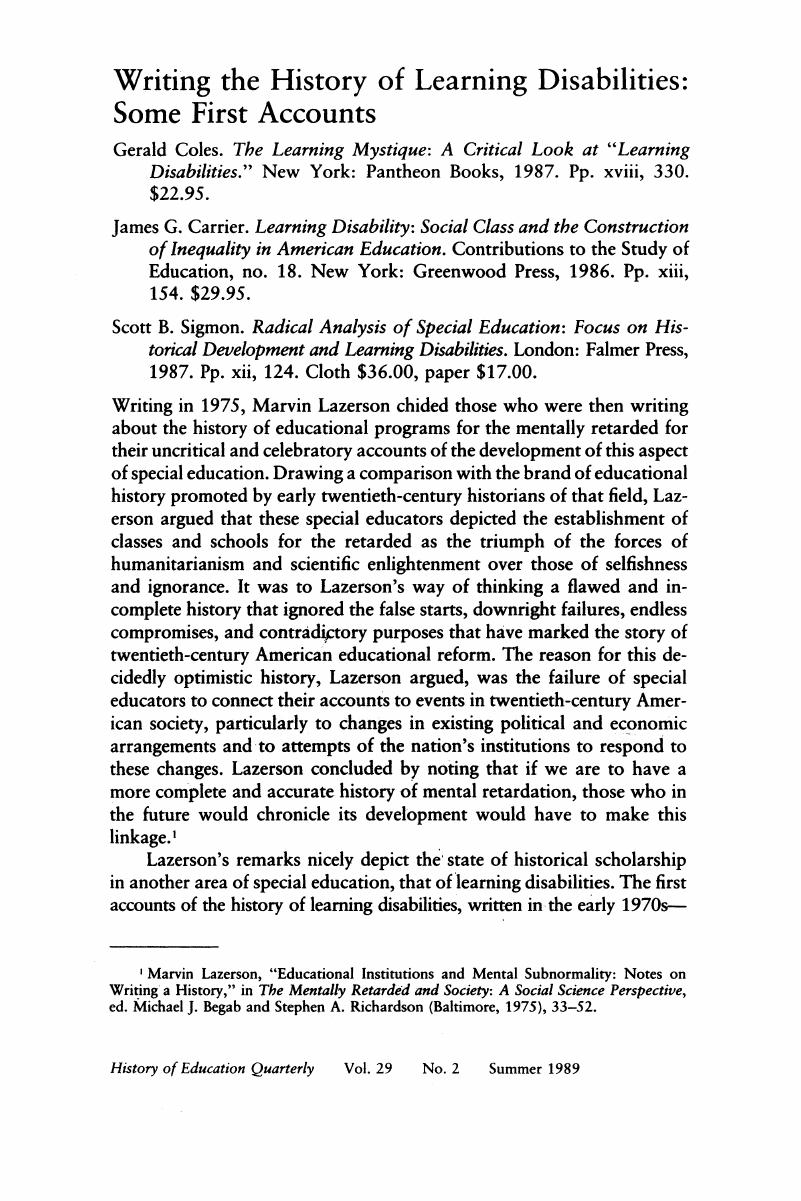No CrossRef data available.
Article contents
Writing the History of Learning Disabilities: Some First Accounts
Published online by Cambridge University Press: 24 February 2017
Abstract

- Type
- Essay Reviews
- Information
- Copyright
- Copyright © 1989 by the History of Education Society
References
1 Lazerson, Marvin, “Educational Institutions and Mental Subnormality: Notes on Writing a History,“ in The Mentally Retarded and Society: A Social Science Perspective, ed. Begab, Michael J. and Richardson, Stephen A. (Baltimore, 1975), 33–52.Google Scholar
2 Hallahan, Daniel P. and Cruickshank, William M., Psychoeducational Foundations of Learning Disabilities (Englewood Cliffs, N.J., 1973), ch. 3; Lee Wiederholt, J., “Historical Perspective on the Education of the Learning Disabled,“ in The Second Review of Special Education, ed. Mann, Lester and Sabatino, David (Philadelphia, 1974), 103–52.Google Scholar
3 For an initial formulation of the connection between public school special classes for backward children and learning disabilities, see Franklin, Barry M., “The First Crusade for Learning Disabilities: The Movement for the Education of Backward Children,“ in The Formation of School Subjects: The Struggle for Creating an American Institution, ed. Popkewitz, Thomas S. (Philadelphia, 1987), 190–209.Google Scholar
4 Franklin, Barry M., “Teaching ‘Weak Minds and Dull Intellects': Curriculum Differentiation and the Education of Backward Children in Atlanta“ (Paper presented at the Annual Meeting of the History of Education Society, Stanford University, Palo Alto, California, October 1986). For various interpretations of the political and economic purposes of curriculum differentiation, see Franklin, Barry M., Building the American Community: The School Curriculum and the Search for Social Control (Philadelphia, 1986); Kliebard, Herbert M., The Struggle for the American Curriculum, 1893–1958 (Boston, 1986); and Labaree, David F., The Making of an American High School: The Credentials Market and the Central High School of Philadelphia, 1838–1939 (New Haven, 1988).Google Scholar


